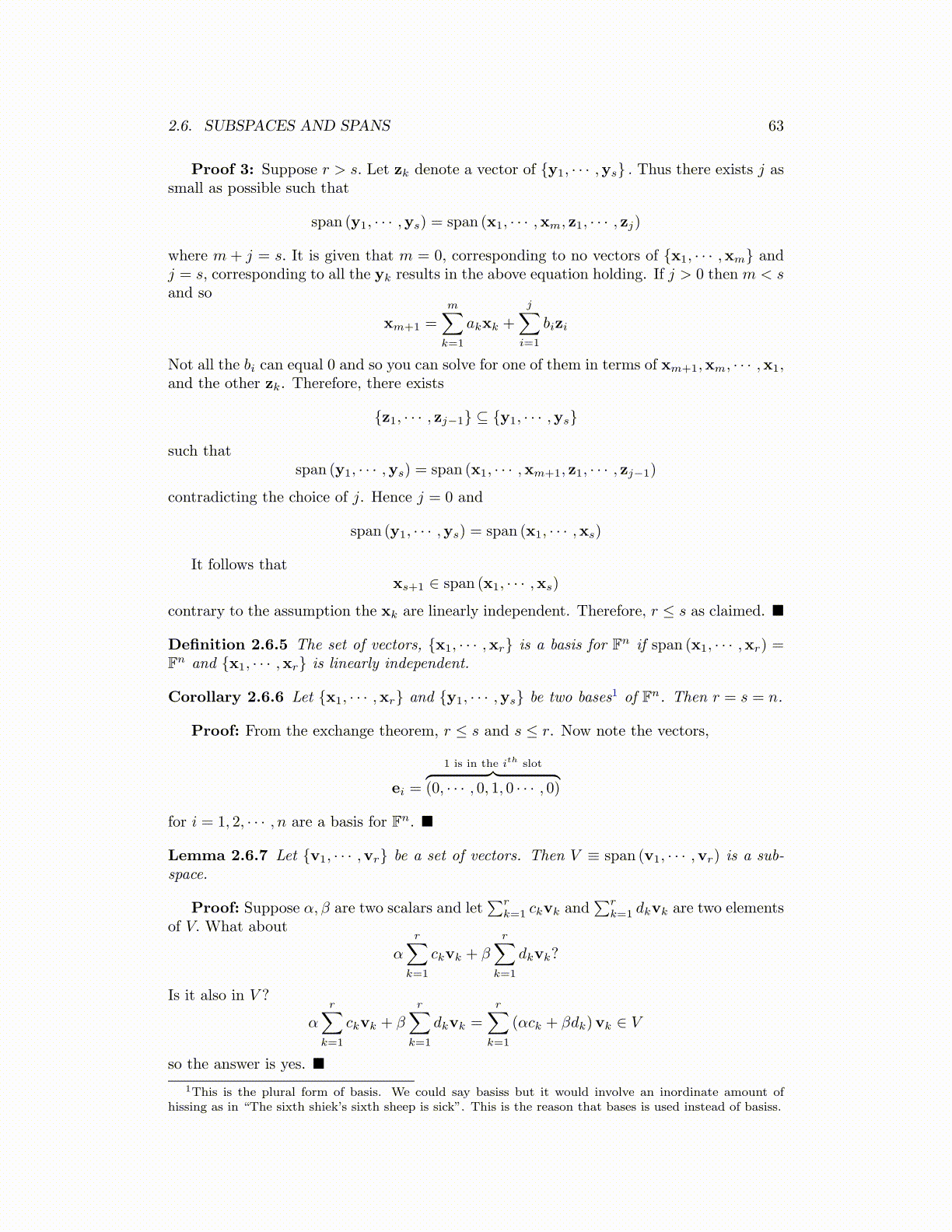
2.6. SUBSPACES AND SPANS 63
Proof 3: Suppose r > s. Let zk denote a vector of {y1, · · · ,ys} . Thus there exists j assmall as possible such that
span (y1, · · · ,ys) = span (x1, · · · ,xm, z1, · · · , zj)
where m + j = s. It is given that m = 0, corresponding to no vectors of {x1, · · · ,xm} andj = s, corresponding to all the yk results in the above equation holding. If j > 0 then m < sand so
xm+1 =
m∑k=1
akxk +
j∑i=1
bizi
Not all the bi can equal 0 and so you can solve for one of them in terms of xm+1,xm, · · · ,x1,and the other zk. Therefore, there exists
{z1, · · · , zj−1} ⊆ {y1, · · · ,ys}
such thatspan (y1, · · · ,ys) = span (x1, · · · ,xm+1, z1, · · · , zj−1)
contradicting the choice of j. Hence j = 0 and
span (y1, · · · ,ys) = span (x1, · · · ,xs)
It follows thatxs+1 ∈ span (x1, · · · ,xs)
contrary to the assumption the xk are linearly independent. Therefore, r ≤ s as claimed. ■
Definition 2.6.5 The set of vectors, {x1, · · · ,xr} is a basis for Fn if span (x1, · · · ,xr) =Fn and {x1, · · · ,xr} is linearly independent.
Corollary 2.6.6 Let {x1, · · · ,xr} and {y1, · · · ,ys} be two bases1 of Fn. Then r = s = n.
Proof: From the exchange theorem, r ≤ s and s ≤ r. Now note the vectors,
ei =
1 is in the ith slot︷ ︸︸ ︷(0, · · · , 0, 1, 0 · · · , 0)
for i = 1, 2, · · · , n are a basis for Fn. ■
Lemma 2.6.7 Let {v1, · · · ,vr} be a set of vectors. Then V ≡ span (v1, · · · ,vr) is a sub-space.
Proof: Suppose α, β are two scalars and let∑r
k=1 ckvk and∑r
k=1 dkvk are two elementsof V. What about
α
r∑k=1
ckvk + β
r∑k=1
dkvk?
Is it also in V ?
α
r∑k=1
ckvk + β
r∑k=1
dkvk =
r∑k=1
(αck + βdk)vk ∈ V
so the answer is yes. ■
1This is the plural form of basis. We could say basiss but it would involve an inordinate amount ofhissing as in “The sixth shiek’s sixth sheep is sick”. This is the reason that bases is used instead of basiss.